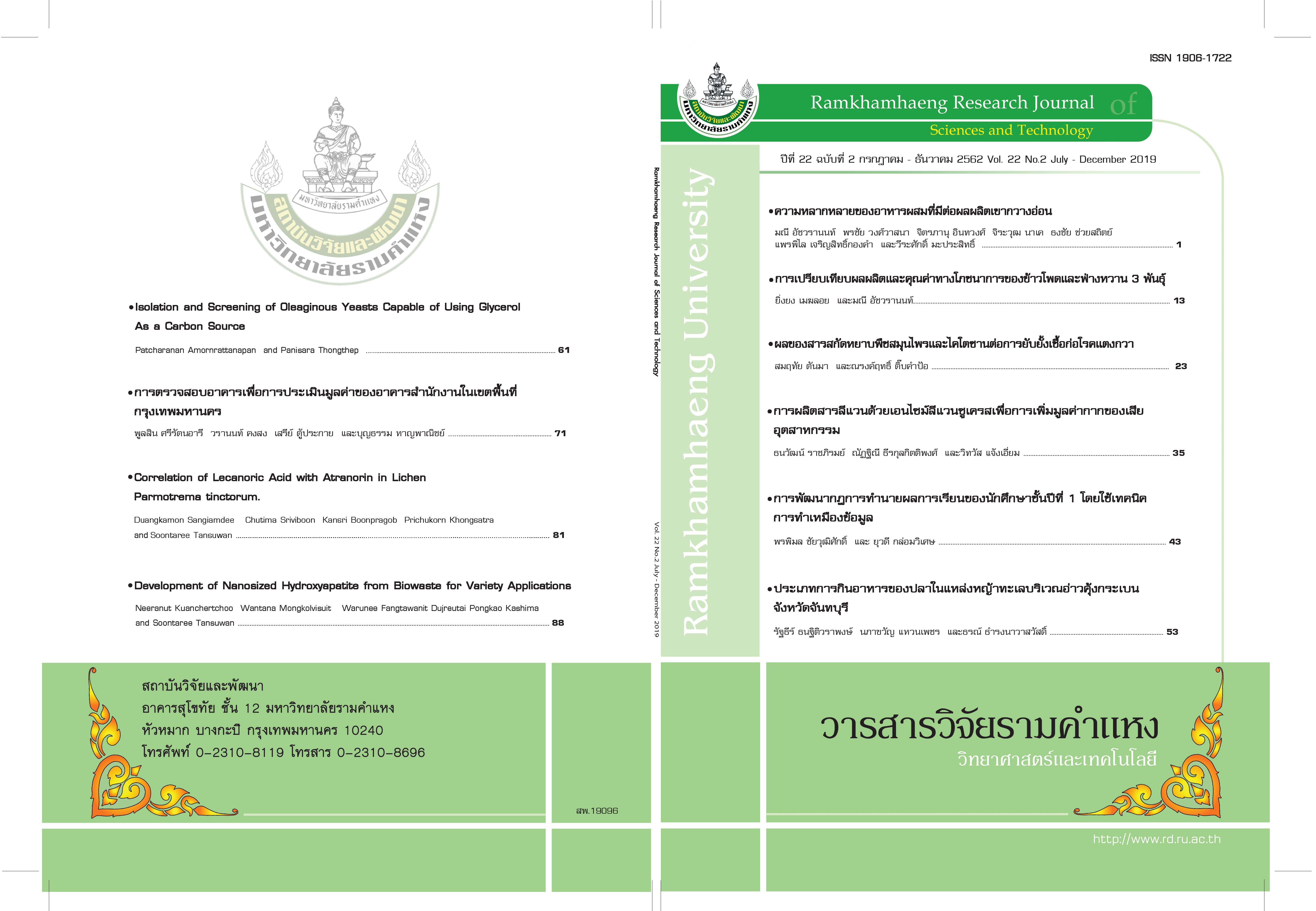Production of Levan by Levansucrase for Value-Added Industrial Waste
Main Article Content
Abstract
Levansucrase is excreted from Bacillus siamensis which can degrade sucrose through hydrolysis reaction and transfructosylation reaction to form Levan. Levan is polysaacharide with the structure of fructose linked with bonds of β(2→6) linkages and β(2→1) linkages in the main chains and branched chains, respectively. In this research investigation, the researchers examined the enzyme purification of Bacillus siamensis and the conditions appropriate for the production of Levan using Levansucrase with sucrose concentration, potential of hydrogen ion (pH), and various temperatures. It was found that the conditions appropriate for the production of Levan were 20 percent (w/v) sucrose concentration, pH 6 at 37 degree Celsius for 48 hours. The enzyme activity was at the maximum of 0.68 unit per milliliter (IU/mL). The study of food industrial waste management with 20 percent (w/v) sucrose concentration using pure Luvansucrase at pH 6 and 38 degree Celcius for 48 hours found that enzyme activity was at the maximum of 0.57 IU/mL). It can be concluded that pure Levansucrase could transform waste into Levan which is a valuable substance to promote its development to be quality products.
Article Details
Ramkhamhaeng University
References
Alam A.S. and Hossain K.M. 2007. A study on industrial waste effluents and their management at selected food and beverage industries of Bangladesh. J. Appl. Sci. Environ. Manage. 11: 5-9.
Dominguez A.L., and Rodridues L.R. 2014. An overview of the recent developments on fructooligosaccharides production and applications. Food Bioprocess Technol. 7: 324-337.
Ebskamp, M. J. M., Smeekens, J. C. M. and Weisbeek, P. J.. 1999. Method for obtaining transgenic plants showing a modified fructan pattern. Google Patents.
Küçükaşik F., H. Kazak, D. Güney. 2011. Molasses as fermentation substrate for Levan production by Halomonas sp. Applied Microbiology and Biotechnology. 89(6): 1729-1740.
Hendry G.A., and Wallace R.K. 1993. The origin, distribution, and evolutionary significance of fructans. Science and Technology of Fructans. Florida, USA : 119-139
Dahech I., and Belghith. K.S. 2011. Administration of Levan polysaccharide reduces the alloxan-induced oxidative stress in rats. International Journal of Biological Macromolecules. 49 (5): 942-947.
Cerning J. 1990. Exocellular polysaccharides produced by lactic acid bacteria. FEMS Microbiology Letters. 87(1–2): 113-130
Yang S.T. 2007. Bioprocessing for Value-added Products from Renewable Resources, (first ed.), Elsevier, Ohio, USA.


